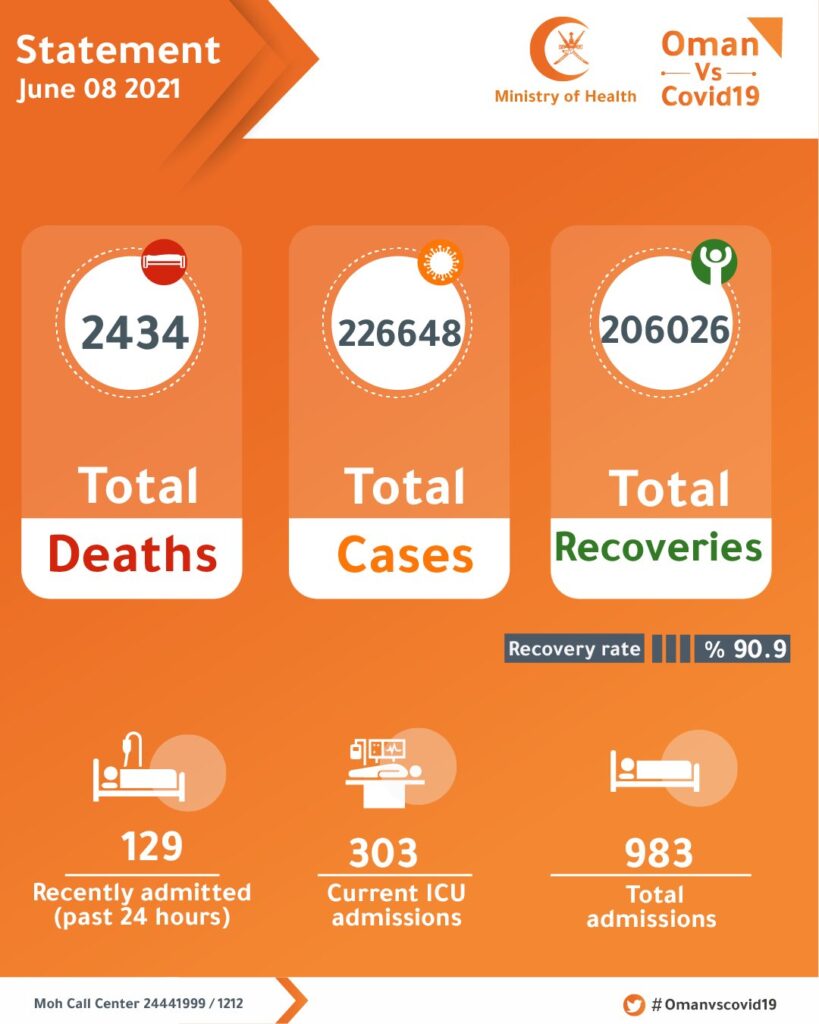The Omani government has reacted swiftly to the COVID-19 pandemic and has shared with the public substantial amounts of data in regard to the cases, recoveries, deaths, and vaccinations. However, regrettably, the COVID data published by the Omani government does not comply with the majority of principles of open data, and this limits the benefits and utility of this data.
The Omani Ministry of Health reported the first coronavirus cases to enter the country on the 24th of February 2020. By March 2021, the government created a Twitter account and a mobile application (Tarassud) that are dedicated to reporting coronavirus statistics and developments. This effort, in itself, is a positive indication of the government’s interest and commitment in being “open” and sharing critical information with the public in a timely manner using communication channels that are most accessible to members of the public nowadays, i.e. social media and mobile apps.


However, despite the clear intentions of the government in being “open”, the COVID-19 data published by the government throughout the ongoing pandemic is not actually “open” from the perspective of open data, as this data does not comply with the Open Data Principles.
First of all, from a substantive informational perspective, the data suffers from a number of completeness issues. For example, cases were reported on a daily basis between March 2020 and July 2020, but a temporary suspension in case reporting during the Eid Al-Fitr period was announced on the 29th of July 2020. Shortly after this announcement, the daily reporting of cases during weekends and public holidays had ceased. Instead, the government now publishes aggregated statistics on the first working day after a weekend or a public holiday. This is difficult to understand because the data is certainly available with the government for all these dates. Furthermore, the government has gradually reduced the amount of information shared and the level of detail at which this information is shared. For example, the government started by reporting the number of tests taken on a daily basis, but then suddenly stopped. It also used to publish a breakdown of new cases between Omanis and non-Omanis, but now only shares this on Tarassud as an overall percentage, without a daily breakdown. The fact that the government is arbitrarily releasing and then withholding certain components of COVID data makes it difficult to seriously rely on this data as one cannot be certain that the data will further be reduced in scope later.

Secondly, the data is not published in technically reusable formats, not machine readable, and not structured. The updates shared by the government are either reported in a series of tweets and images published on the dedicated Twitter account or on the mobile application and cannot be extracted. These methods make it impossible to copy and paste the data as text, let alone apply the most simple analysis techniques to identify trends or create predictions.
Finally, the data is not easily accessible and discoverable. There is no search engine, index, or proper tool to retrieve the data for a specific date. Instead, one must read through a series of tweets to extract the relevant information for any specific day. Even on Tarassud, which is a custom-made application, users are not able to access historical data. There is also no option that enables users to download the information in bulk to save them for historical records in case the government decides to delete its COVID-19 Twitter account when the pandemic is hopefully over.
The efforts of the Omani government in publishing COVID-19 data must certainly be applauded, but the approach used represents a lost opportunity to take advantage of the principles of open data to make sure that the data is re-usable by members of society in a manner that contributes to managing this crisis.
Open Data Oman has taken the initiative to compile a machine-readable format of COVID-19 published by the Omani government to create an open dataset that can be viewed and downloaded on this link.
